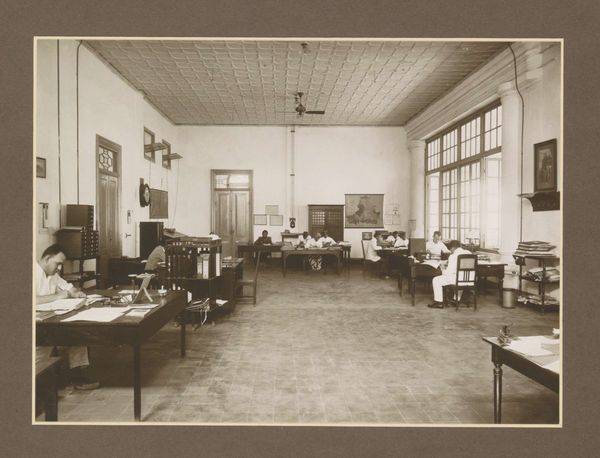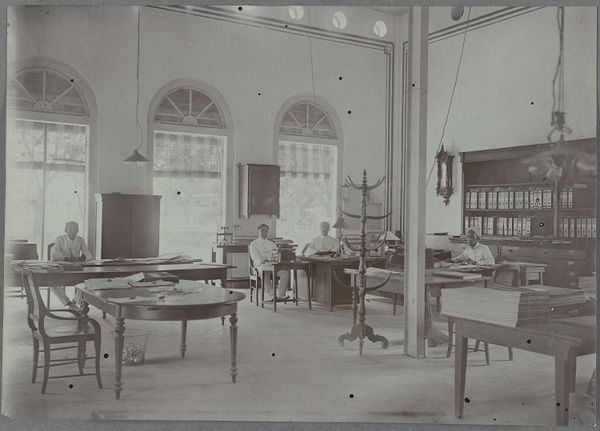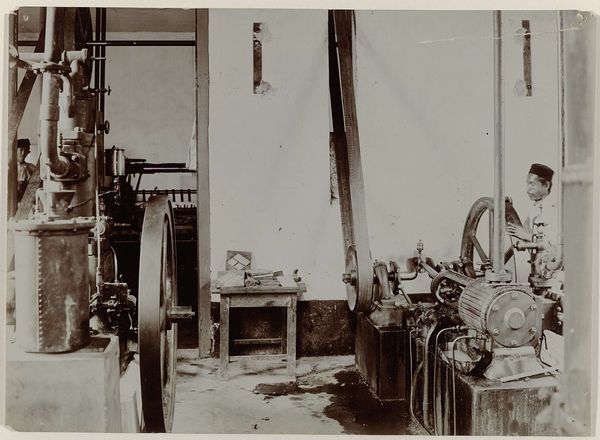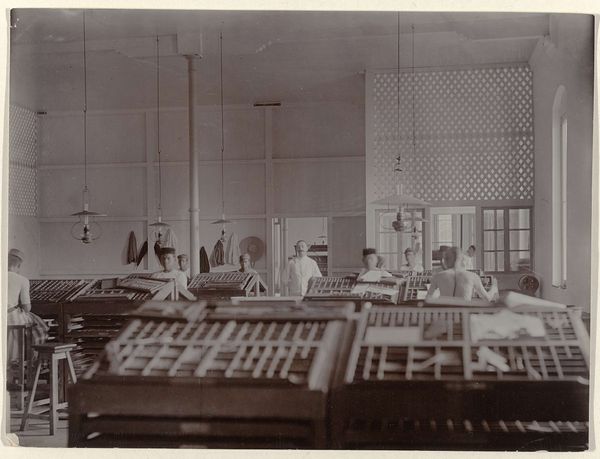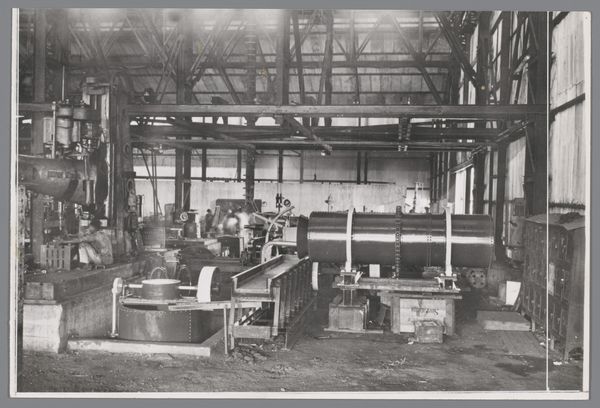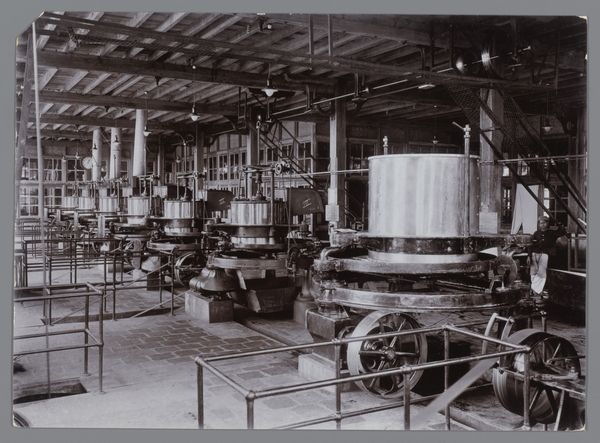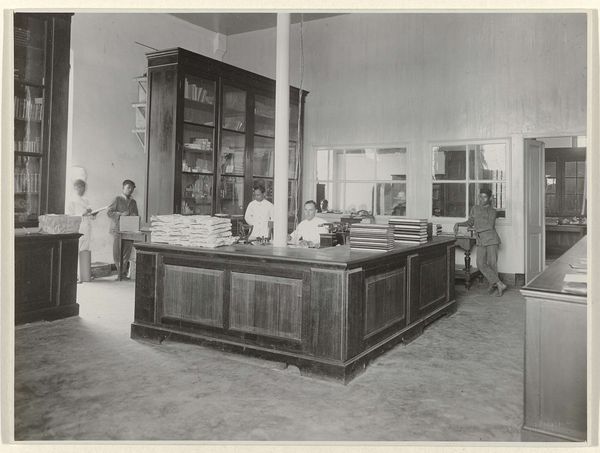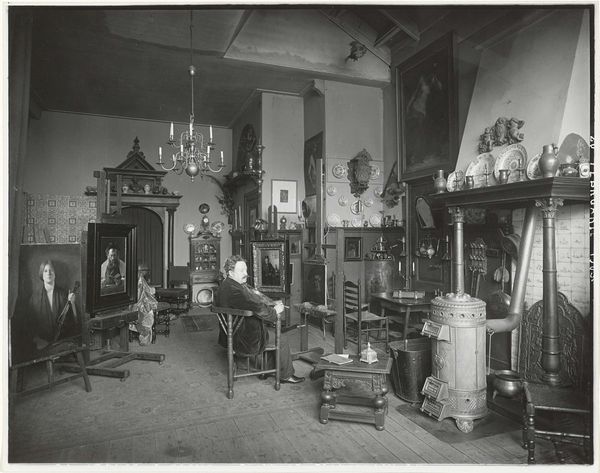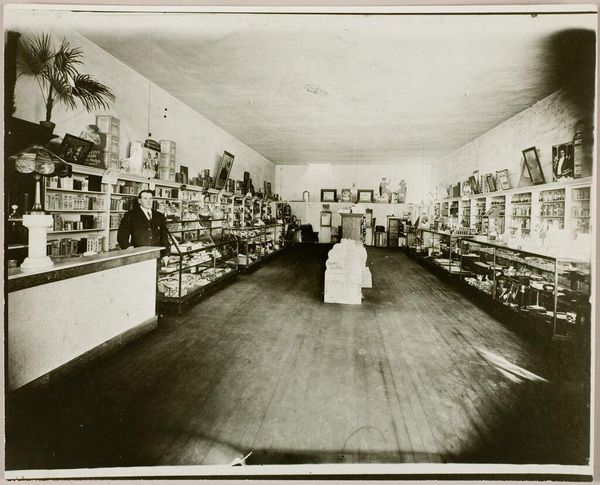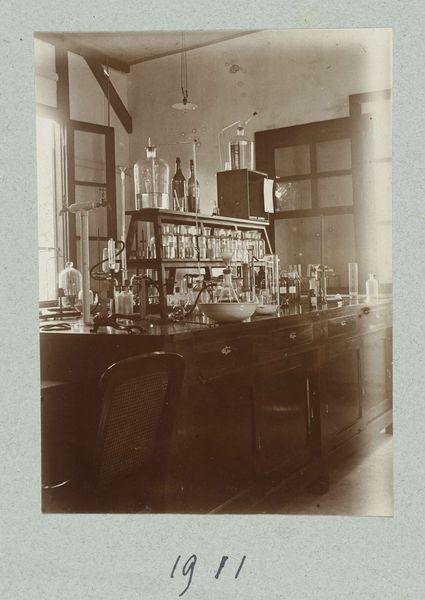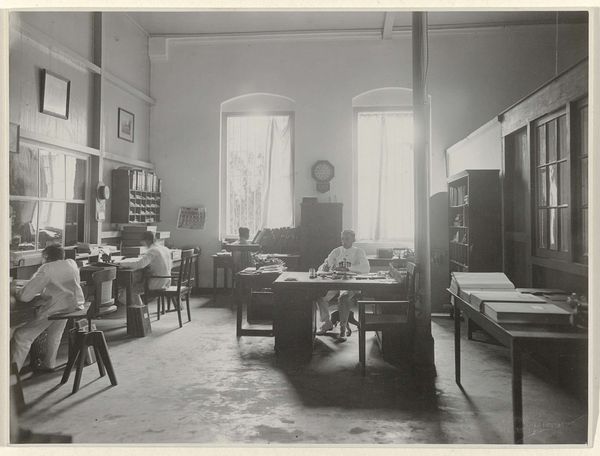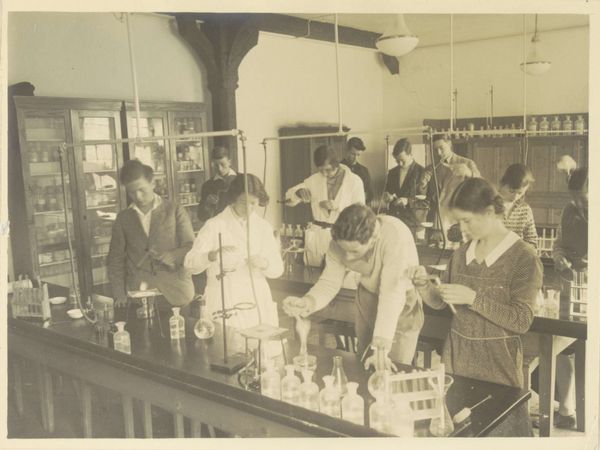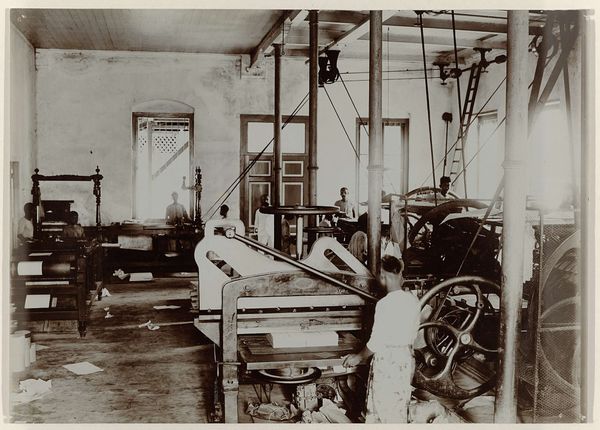
Interieur van het laboratorium van de suikeronderneming Nieuw Tersana, Cheribon, voormalig Nederlands-Indië c. 1890 - 1935
0:00
0:00
photography, gelatin-silver-print
#
still-life-photography
#
black and white photography
#
asian-art
#
photography
#
gelatin-silver-print
#
monochrome photography
Dimensions: height 171 mm, width 227 mm
Copyright: Rijks Museum: Open Domain
Curator: Ah, let me introduce this gelatin silver print entitled "Interieur van het laboratorium van de suikeronderneming Nieuw Tersana, Cheribon, voormalig Nederlands-Indië" which translates to "Interior of the laboratory of the sugar company Nieuw Tersana, Cheribon, former Dutch East Indies," dating circa 1890 to 1935 by Onnes Kurkdjian. What do you think when you look at this, our audience may be wondering. Editor: My first impression? This image is incredibly still, ghostly almost. All the meticulously placed equipment suggests scientific pursuit but the starkness also feels… sterile and lonely. Curator: I sense a history contained within the materials; the weight of experimentation hanging thick in the air! Look at how systematically everything is organized on the shelving—all those gleaming glass objects so precise in form—it highlights the process, turning nature’s bounty into something… industrial. Editor: Yes, exactly! The industrial. Think of what goes into it. All those hands involved in extracting sugar—from backbreaking labor in cane fields to refining processes that necessitate very particular tools which create social divides and environmental exploitation. This photo really brings that context to the fore. Curator: In an imagined narrative, perhaps, those bottles, bubbling under watchful gaze, hold memories from colonial commerce. I’m captivated by this stark visual rendering! Editor: Absolutely. Every gleaming beaker and metal contraption here is an artifact. Reflecting colonial era commerce, but then that very sugar production—it connects directly to power relations both historically and today through consumption of the labor that once built empires. The material traces of colonial sugar linger. Curator: What I admire, as an artist myself, is that within its simple visual framework and through black and white it captures complexity and the power of this specific time. Editor: The history contained within these humble vessels and surfaces is now ever-clear, an unseen narrative just beneath a veneer. Thank you. Curator: Thank you. It all comes to life in its own way now, for us.
Comments
No comments
Be the first to comment and join the conversation on the ultimate creative platform.

